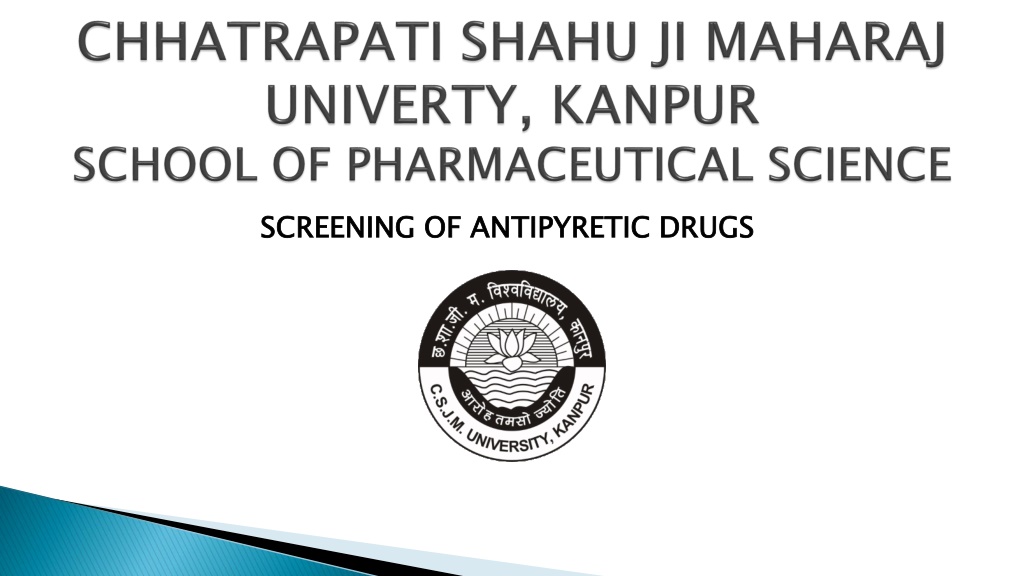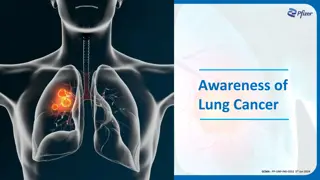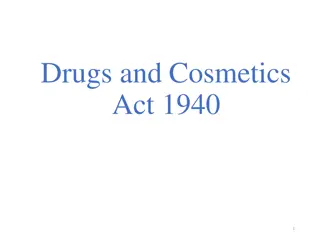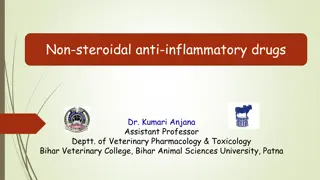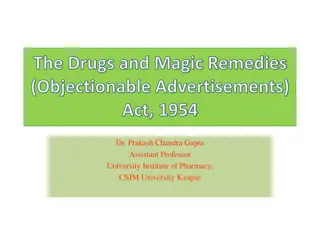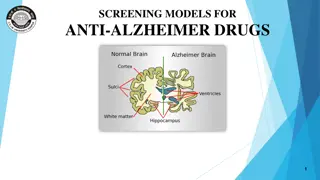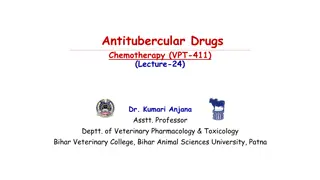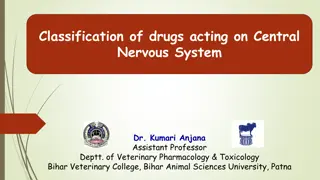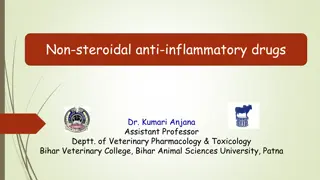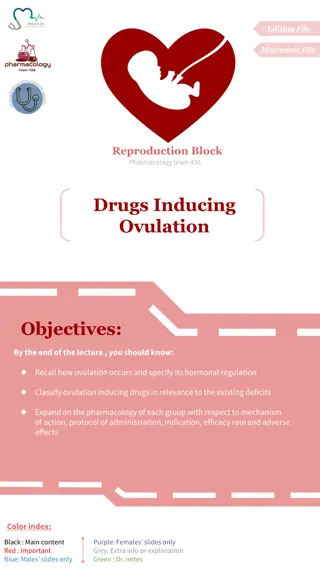Screening of Antipyretic Drugs: Mechanism and Models
Antipyretic drugs such as Aspirin and Paracetamol lower elevated body temperature by resetting the thermostat, increasing heat dissipation, and inactivating COX enzyme. Screening methods include in vivo models like Brewer's yeast suspension and Lippopolysaccharide-induced pyrexia.
Download Presentation

Please find below an Image/Link to download the presentation.
The content on the website is provided AS IS for your information and personal use only. It may not be sold, licensed, or shared on other websites without obtaining consent from the author.If you encounter any issues during the download, it is possible that the publisher has removed the file from their server.
You are allowed to download the files provided on this website for personal or commercial use, subject to the condition that they are used lawfully. All files are the property of their respective owners.
The content on the website is provided AS IS for your information and personal use only. It may not be sold, licensed, or shared on other websites without obtaining consent from the author.
E N D
Presentation Transcript
SCREENING OF ANTIPYRETIC DRUGS SCREENING OF ANTIPYRETIC DRUGS
Introduction to antipyretic drugs Mechanism of action Screening models Antipyretic activity in rat Antipyretic activity in rabbit
The drugs which lowers the elevated body temperature to the normal are known as antipyretic drug. The most commonly used drugs are - Aspirin Paracetamol
Antipyretic drugs reset the thermostat toward normal and rapidly lowers the body temp. of febrile patient by increasing heat dissipation as a result of peripheral vasodilation and sweating . Inactivation of COX enzyme
In vivo Models for antipyretic screening are - Brewer s yeast suspension method Lippopolysacchride induced pyrexia method
RATIONALE Suspension in rat . REQUIREMENTS Animal Rats Weight - 150-200gm. Sex M/F Dose 10 ml/kg Inducing agent Route of administration S .C RATIONALE To induce pyrexia using Brewer s Yeast REQUIREMENTS Inducing agent Brewer s yeast suspension
Adding 500g of bakers yeast( sacchromyces cerevisiae ) to 2L of deionised water. The prepared suspension was autoclaved at 115oC for 10 min. followed by fast cooling on ice. Cell debris was separated by centrifugation at 400 rpm 4oC for 10 min.
The produced water soluble extract was stored at -20oC until used The 15g of extract dissolved in 100 ml of water to prepare 15% of brewer s yeast suspension.
Rats of avg. weight 150-200gm were taken in 6 groups Body temperature is measured by rectal thermometer ( thermocouple) to a depth of 2 cm 15% brewer s yeast +0.9% saline sol. inject rat subcutaneously behind the back of neck & placed for 18 hr When body temperature rises test drug is given Record the response at 30,60,120,180 min.
A decrease of body temperature for at least 0.5 C for more than 30 min. as compared with the temperature value before administration of the test compound is regarded as positive effect. Results are compared with effect of the standard drug .
RATIONALE lippopolysacchride from gram negative bacteria such as E.coli . Animal Sex M/F weight 3-5 kg Dose 0.1-0.2ml/kg containing 0.1-0.2 g Inducing agent gram negative bacteria ex- E.coli Route of administration I.V in the rabbit ear RATIONALE To induce pyrexia using Animal Rabbit Inducing agent Lippopolysaccchrides from
Initial temperature is noted down The room temperature is kept at 22-24c The lippopolysacchride is injected in the rabbit The animals are receive the test and standard drug by oral route The rectal temperature by thermocouple are recorded in 30,60,120 and 180 min post dosing
The maximum reduction in rectal temperature in comparison to the control group is calculated. Results are compared with effect of the standard drug .
